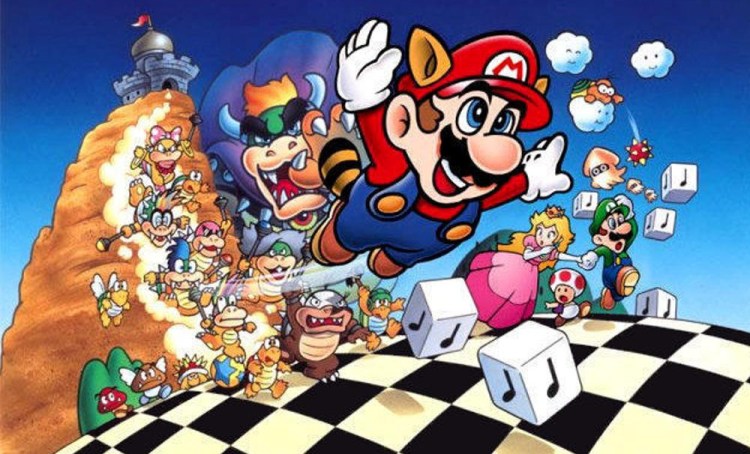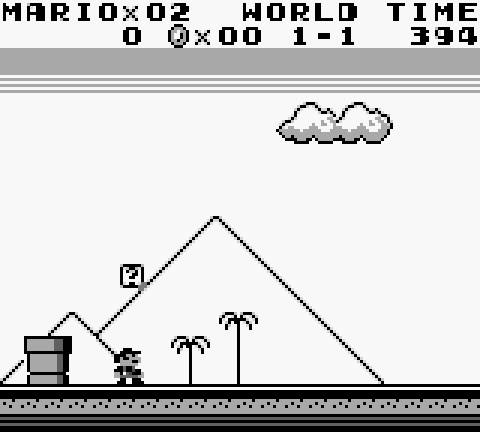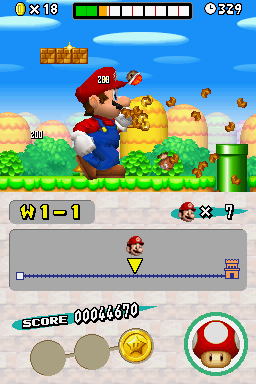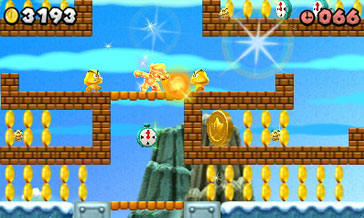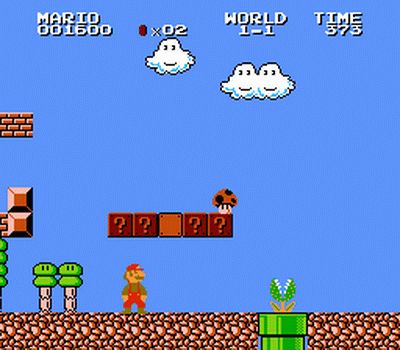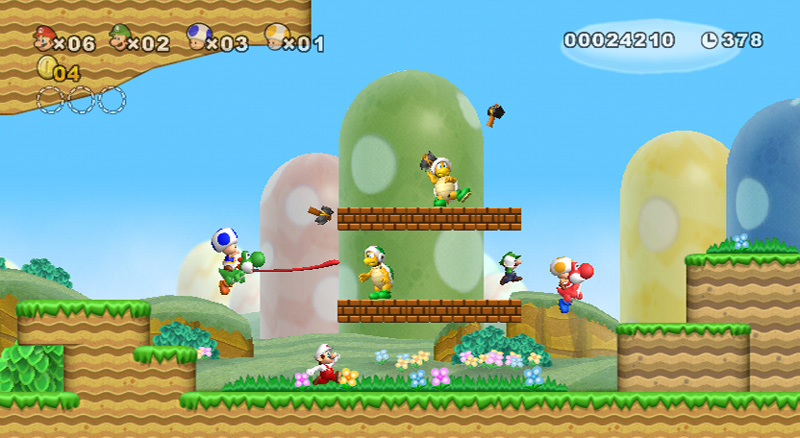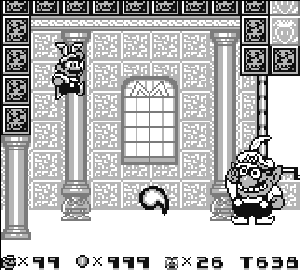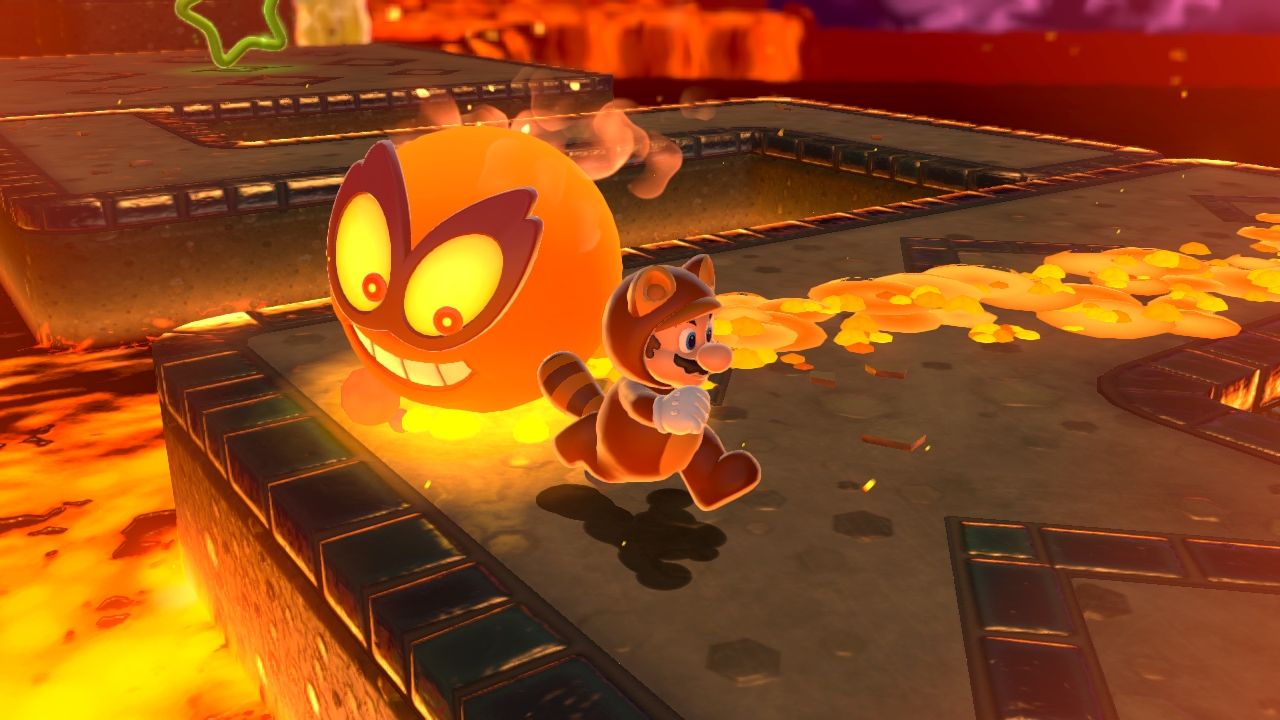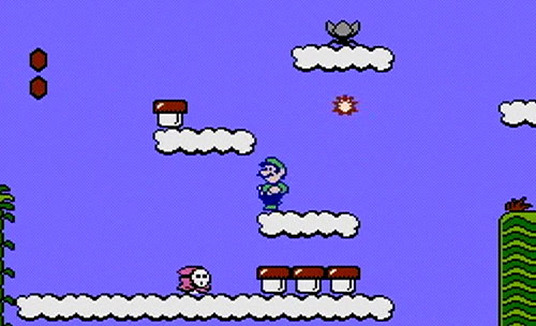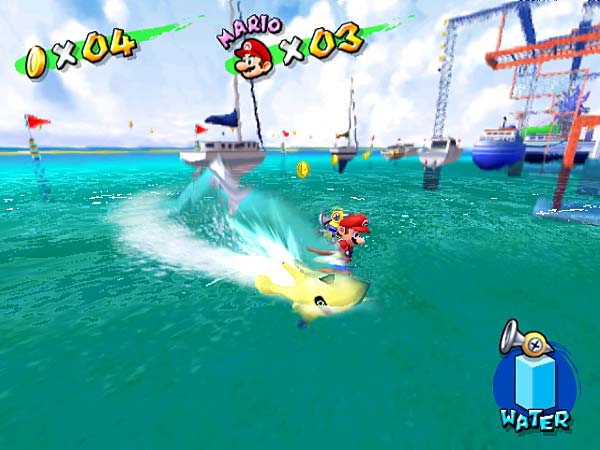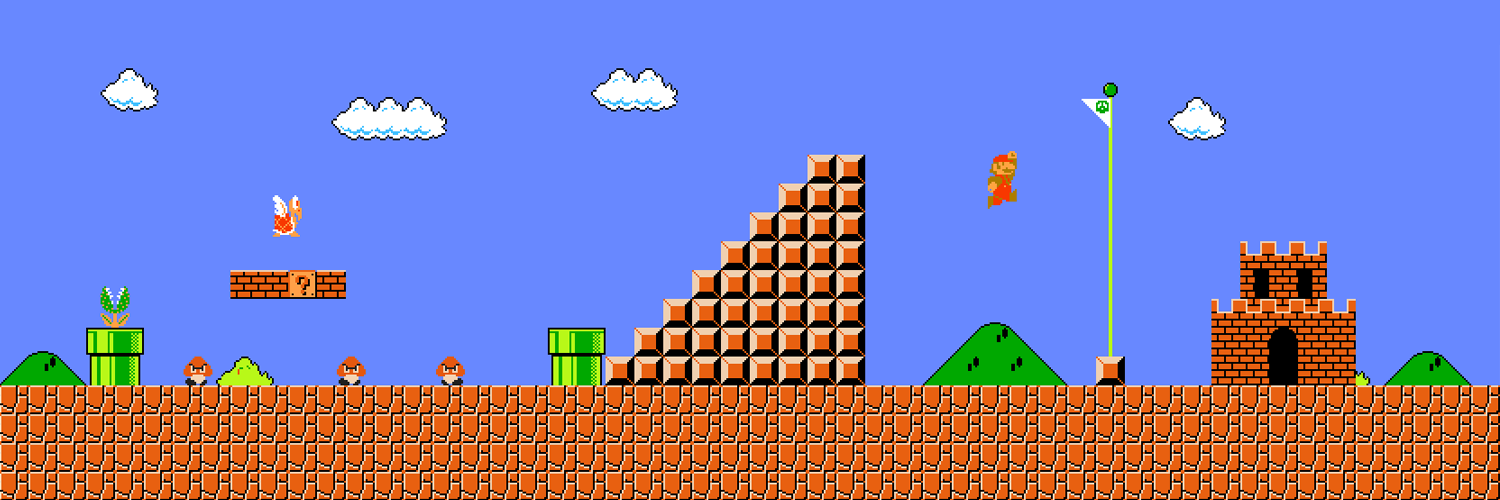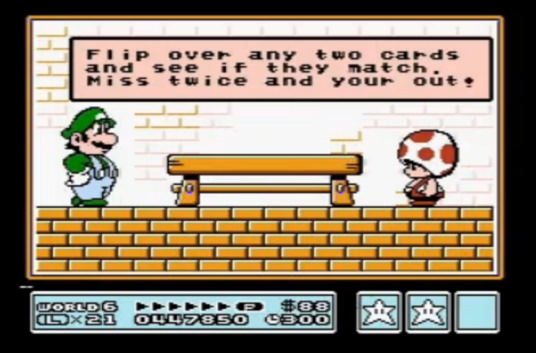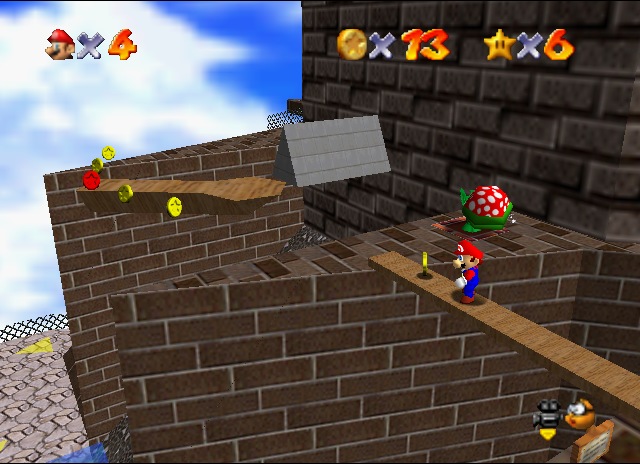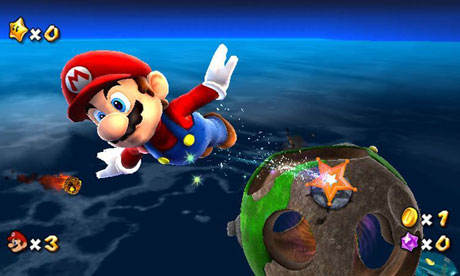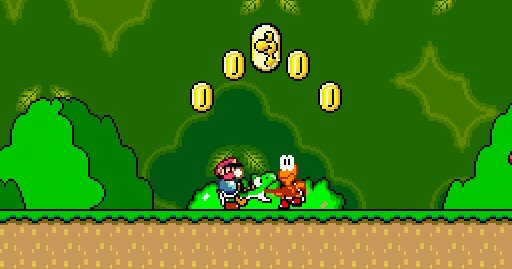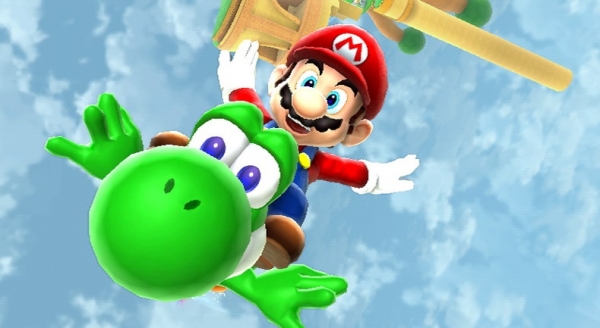Nintendo says that today is Mario Day (March 10 … MAR10 … get it?), so let’s celebrate it by listing the Italian plumber’s main adventures.
The Mario franchise is the best-selling in gaming history, with sales exceeding 500 million copies. Mario is global icon that has appeared on everything from shampoo bottles to his own (awful) movie. He has starred in a lot of games, but the main series of 2D and 3D platformers (games that focus on navigation of levels with by jumping and running) remain the most iconic. Of course, before we get ranking from worst to best, we have to decide what even counts as a “main series” game anymore. Do portables count? What about remakes?
For our list, we have these criteria:
- The game must have Super Mario in the title.
- It must predominantly be a platformer (no Mario Is Missing here) in which the default character you control is Mario (Sorry, Yoshi’s Island).
- It can’t be a remake.
- We’re not counting Super Mario Maker, as great as it is, because it’s just a different kind of game.
That leaves us with 17 to go through, so let’s get started! Note that the release years are based on where the game first appeared, which is usually Japan.
17. Super Mario Land (1989, Game Boy)
At the time, Super Mario Land was a big novelty. Portable gaming was relatively new, and the idea of playing Mario in a car was fascinating. But it’s archaic today. The 2D physics don’t feel right, and the graphics are simple. Super Mario Land 2 was such an improvement that it basically rendered this first attempt at portable platforming unnecessary.
16. New Super Mario Bros. (2006, DS)
In 2006, we hadn’t had a 2D Mario game in over a decade, so New Super Mario Bros. was a fun nostalgia trip for many. However, it’s a relatively simple (and easy) game that doesn’t come close to matching the brilliance of the classics that inspired it. It sold like crazy, however, ensuring that we’d be seeing plenty more 2D Mario games.
15. New Super Mario Bros. 2 (3DS, 2012)
New Super Mario Bros. 2 is actually the third New Super Mario Bros. game (after the original and Super Mario Bros. Wii). It was also the first of two to come out in 2012 (New Super Mario Bros. U would follow). At this point, we were feeling Mario fatigue. Nintendo must have known it, since it pushed a gimmicky coin-based theme with this one, which didn’t do much to improve this outing.
14. Super Mario Bros.: The Lost Levels (1986, Nintendo Entertainment System)
In Japan, this is just known as Super Mario Bros. 2. Unlike the sequel we got, this game is pretty identical to the original. It features the same engine and art style as Super Mario Bros., but it has a ramped-up difficulty that challenges even the most hardcore of platforming experts. It’s a fun game, but its similarity to the original hurts The Lost Levels. It feels like Super Mario Bros 1.5.
13. New Super Mario Bros. U (2012, Wii U)
The New Super Mario Bros. games were really beginning to feel a bit tired at this point. This was the fourth one in seven years. By comparison, we once waited about that long for any new Mario platformer (between Super Mario 64’s 1996 release and Super Mario Sunshine’s 2002 debut, the longest break in the series since it’s inception). It’s a fun game, but it has become a blur in the crowded New Super Mario Bros. subseries.
12. New Super Mario Bros. Wii (2009, Wii)
I know we’re coming off as harsh to the New Super Mario Bros. games, even though they’re fun platformers. The Wii entry is the best. New Super Mario Bros. Wii is the first to include cooperative play, allowing up to four players to run through levels at the same time. It added a fun element to traditional Mario platforming that suddenly turned the experience into something like a party game.
11. Super Mario Land 2: 6 Golden Coins (1992, Game Boy)
While the first Super Mario Land is a little off, 6 Golden Coins feels like a real Mario game. It has unique levels that take Mario from graveyards to space and more. It’s also the debut of Wario, a Mario rival that soon starred in his own series of games.
10. Super Mario 3D World (2013, Wii U)
Super Mario 3D World is a great platformer that brought the fun four-player co-op mechanic from the console New Super Mario Bros. games to the 3D side of Mario adventures. The Cat Suit power-up, which lets Mario friends climb up walls, is also one of the best the series has ever introduced. However, unlike many of the other 3D Mario games, this Wii U entry lacks cohesion (you don’t have a strong central theme like “tropical island” or “gravity” here), and it never gets quite as inventive as the Galaxy series.
9. Super Mario Bros. 2 (1987, Nintendo Entertainment System)
By now, many of you know that our Super Mario Bros. 2 originally wasn’t a Mario game at all. In Japan, it was Doki Doki Panic, and Nintendo re-skinned it with Mario characters for a Western release after fearing that we would find the actual Super Mario Bros. 2 (our Lost Levels) too hard. Well, this actually worked out well. Super Mario Bros. 2 is a fantastic 2D platformer that encouraged players to explore their surroundings, and it’s also the first game that gave Luigi a unique identity and lets us play as Princess Peach and Toad.
8. Super Mario 3D Land (3DS, 2011)
Mario’s greatest portable adventure is his first (and so far only) one that allows you to experience his 3D platforming on the go. It’s 3D in more ways than one, since the 3DS’s glasses-less 3D often played an important part in helping players time find secrets and land difficult jumps. It remains one of the best uses of the portable’s capabilities.
7. Super Mario Sunshine (2002, GameCube)
In 2002, fans were hungry for a new Mario game. Many wanted a direct sequel to Super Mario 64. In many ways, Super Mario Sunshine is a direct follow-up to that Nintendo 64 classic. You have many of the same acrobatic moves, and levels still focused more on exploration and less on linear progression. However, Sunshine features a tropical setting and gives Mario a water pack so that he can squirt enemies and hover, which helps Sunshine differentiate itself and feel like its own game.
6. Super Mario Bros. (1985, Nintendo Entertainment System)
The epitome of a classic. Not only did it birth the Super Mario series, but it was the father of platformers and, really, modern gaming in general. It took digital entertainment away from the era of high scores and introduced us to the thrill of jumping on enemies, collecting coins, and saving a princess. It was like The Beatles of gaming, forever changing and influencing everything that came after it. It still holds up as a fantastic platformer today.
5. Super Mario Bros. 3 (1988, Nintendo Entertainment System)
The Lost Levels plays it too safe, and Super Mario Bros. 2 is basically a different game than the rest. Super Mario Bros. 3 feels like the truest sequel to the original. It features similar gameplay as the first Super Mario Bros., but the controls respond better, levels are more complicated, and you have a lot more power-ups to collect. It also introduces the idea of an overworld map for selecting levels, which every 2D Mario (and many of the 3D ones) include.
4. Super Mario 64 (1996, Nintendo 64)
3D gaming was far from perfected before 1996, and this Nintendo 64 launch title showed everyone how it was done. Super Mario 64 is the most pioneering game in the series since the original, opening us up to nonlinear worlds that we could run across, jump through, and explore. Not only is it the first notable 3D platformer, but it still remains one of the best in gaming’s history.
3. Super Mario Galaxy (2007, Wii)
Super Mario Galaxy is platforming bliss. Nintendo challenged itself to think outside of conventional level-design thinking by focusing on stages made up of different-sized worlds, each with their own gravitational centers. This allows players to do crazy things like jump across the entire circumference of a tiny planet in one bounce.
2. Super Mario World (1990, Super Nintendo)
The last 2D Mario game before the New Super Mario Bros. series is also the best. It perfects the formula that Super Mario Bros. 3 had already improved, but it also looks much more colorful and vibrant thanks to the Super Nintendo’s improved graphics. It’s also the debut of Yoshi, the lovable dinosaur who has become a staple in the Mario franchise and a star of his own series.
1. Super Mario Galaxy 2 (2010, Wii)
It’s Super Mario Galaxy, but better. It features the greatest level designs in the series, the 3D platforming is silky smooth, its world are beautiful, and the music constantly soars. Super Mario Galaxy 2 should have felt repetitive, especially since the original had just come out three years earlier, but each stage gave players something new to try. It’s the greatest 3D platformer ever made and the single best Mario game.
VentureBeat's mission is to be a digital town square for technical decision-makers to gain knowledge about transformative enterprise technology and transact. Learn More
